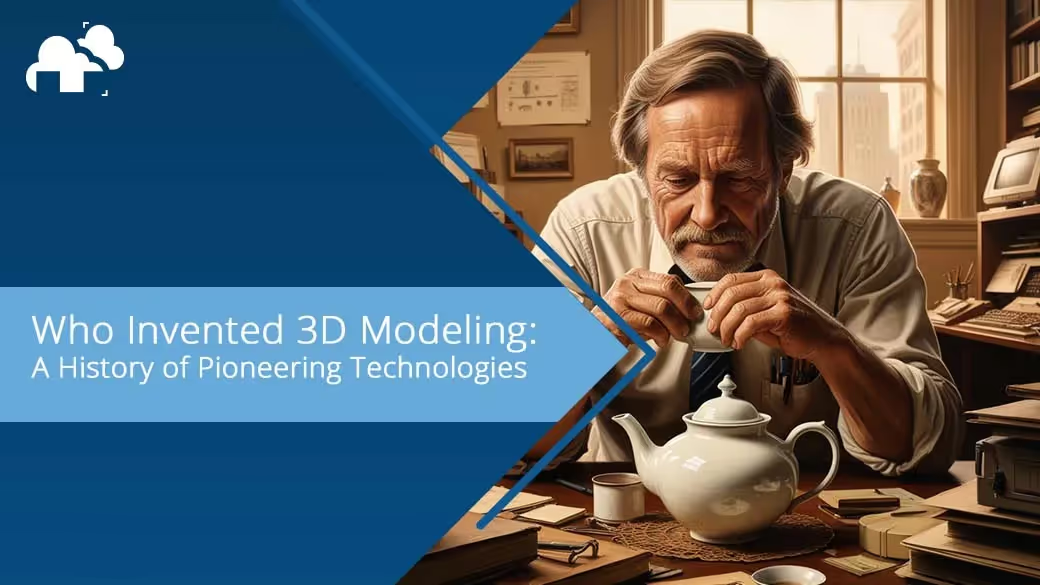
The evolution of 3D modeling stands as one of the most transformative developments in the history of technology, bridging the gap between virtual imagination and tangible reality. From architectural visualization and 3D printing to the vivid realms of video games and virtual reality, 3D modeling shapes numerous aspects of modern life. A crucial component in this technological journey is the blender render farm, which provides the immense computing power necessary to render complex 3D scenes swiftly, enhancing the productivity and creativity of artists and developers. This article traces the pioneering technologies, visionary individuals, and powerful tools like render farms that laid the groundwork for 3D modeling as we know it today.
3D modeling is the process of creating a three-dimensional representation of any object or surface. This digital technique is foundational in industries like animation, gaming, architecture, engineering, and interior design. By utilizing software such as Blender, Autodesk 3ds Max, and Maya, professionals can render photorealistic images, simulate real-world physics, and generate intricate animations. The precision and versatility of 3D modeling have revolutionized product design, allowing for detailed visualizations and prototyping, ultimately reducing costs and enhancing creativity across multiple fields.
The journey to sophisticated 3D modeling began with the rudimentary stages of computer graphics. Initially, computer graphics were limited to basic 2D visualizations. However, advancements in computer hardware and software led to the development of more complex graphical representations, paving the way for the intricate 3D models we see today.
Ivan Sutherland is often regarded as the father of computer graphics. In 1963, he developed Sketchpad, a revolutionary interactive computer graphics program. Sketchpad allowed users to draw directly on a computer display using a light pen, enabling the creation of complex drawings and graphical models. This innovation laid the foundation for computer-aided design (CAD), which has become an indispensable tool in engineering, architecture, and various other disciplines.

Sketchpad was a groundbreaking step toward interactive 3D modeling. By allowing users to manipulate graphical objects directly, it demonstrated the potential of computers in graphical design and set the stage for future developments in 3D modeling. Sketchpad’s principles of geometric constraints and interactive user interfaces are still fundamental in today’s CAD software.
The DAC-1 (Design Augmented by Computer) system, developed in the early 1960s by General Motors and IBM, was one of the first graphical design systems. It enabled engineers to create complex engineering drawings with unprecedented accuracy and efficiency. DAC-1's ability to store and manipulate digital models of mechanical parts was a significant milestone, demonstrating the practical applications of computer-aided design in industry.
In 1975, Martin Newell, a computer scientist at the University of Utah, created a 3D model of a simple teapot, which became a standard reference object in computer graphics research. Known as the Utah Teapot, this model was used to test and demonstrate various rendering algorithms and techniques. It became an iconic symbol in the computer graphics community, illustrating the advancements in rendering and 3D modeling.

The progression from wire-frame models to solid and surface modeling marked a significant leap in the realism and applicability of 3D graphics. Wire-frame models, which represent objects using lines and vertices, were the first step in 3D modeling. However, these models lacked surface detail and realism. The development of solid modeling techniques, which define the volume of an object, and surface modeling, which adds texture and detail to the object's surface, enabled the creation of more accurate and realistic 3D representations.
Photorealism in 3D graphics aims to create images indistinguishable from real photographs. Texture mapping, a technique introduced in the 1970s, plays a crucial role in achieving this goal. By applying 2D images (textures) to 3D models, artists can add intricate details and surface qualities, enhancing the realism of the rendered images. Techniques such as bump mapping, normal mapping, and displacement mapping further refine the appearance of 3D models, making them appear more lifelike.
Autodesk 3ds Max and Blender are two of the most influential software in the 3D modeling industry. 3ds Max, initially released in 1996, is known for its robust features in modeling, animation, and rendering, making it a favorite among professionals in film, games, and architectural visualization. Blender, an open-source software, offers a comprehensive suite of tools for 3D modeling, animation, and rendering. Its accessibility and powerful capabilities have made it popular among independent artists and small studios.
NURBS was developed to address the need for precision and flexibility in modeling complex, smooth surfaces. Pioneered by Pierre Bézier of Renault in the 1960s, Bézier curves provided the mathematical foundation for NURBS, enabling precise control over curved surfaces. Further contributions by engineers like Paul de Casteljau at Citroën enhanced its mathematical rigor, making NURBS essential in high-precision industries such as automotive and aerospace engineering. This technology was later adapted for CAD applications, significantly improving the accuracy of complex surface modeling.

Subdivision surfaces, innovated by Edwin Catmull and Jim Clark in 1978, transformed 3D modeling by allowing the creation of smooth, organic shapes through the iterative refinement of polygonal meshes. This technique became crucial in animation, enabling artists to craft lifelike and expressive digital characters, which enhanced the realism and aesthetic appeal of CGI. Subdivision surfaces quickly became a fundamental tool in animation studios, including Pixar, where it helped create iconic characters and scenes, revolutionizing animation and character design.

3D modeling is a cornerstone in design, film, and animation, where it enables the creation of detailed and realistic visual content. In product design, 3D modeling allows designers to visualize and iterate on their creations before producing physical prototypes, saving time and resources. This process is crucial in industries ranging from consumer electronics to automotive design, where precision and innovation are paramount.
In the film industry, 3D modeling is used to create stunning visual effects and animated characters. Movies such as "Avatar","Toy Story" and many others have set new standards for visual storytelling, with 3D models forming the backbone of their iconic scenes and characters. Animators use 3D modeling software to craft detailed environments and characters, which are then animated to bring stories to life in ways that were previously unimaginable.
3D printing has revolutionized manufacturing and prototyping, enabling the physical realization of digital 3D models. By converting digital models into physical objects, 3D printing facilitates rapid prototyping, customization, and small-scale production. This technology has applications in various fields, including product design, medical implants, and even food production.
Virtual reality (VR) and video games have pushed the boundaries of 3D modeling, creating immersive and interactive experiences. In VR, users can explore and interact with 3D environments in a fully immersive manner. Video games leverage 3D modeling to create detailed characters, environments, and animations, enhancing the player’s experience. The demand for realistic and engaging content in these industries drives continuous advancements in 3D modeling techniques.
3D modeling has transformed the design processes in construction and manufacturing. In architecture, 3D models allow for detailed visualization of buildings and structures before construction begins, enabling better planning and communication. In manufacturing, 3D models facilitate the design and testing of components, reducing the time and cost associated with physical prototypes.
Simulation and analysis using 3D models enhance precision and efficiency in engineering. Finite element analysis (FEA) and computational fluid dynamics (CFD) are techniques that use 3D models to simulate physical phenomena, such as stress, heat transfer, and fluid flow. These simulations provide valuable insights, enabling engineers to optimize designs and improve performance.
In the medical field, 3D modeling is used to create accurate representations of anatomical structures, which are essential for surgical planning and simulation. Medical professionals use these models to practice complex procedures, improving patient outcomes and reducing the risk of errors. Additionally, 3D printing of medical implants and prosthetics tailored to individual patients enhances the precision and effectiveness of medical treatments.
Educational institutions utilize 3D modeling to provide students with interactive learning experiences. From virtual dissection in biology classes to exploring historical sites in history lessons, 3D models make learning more engaging and accessible. These tools help students visualize and understand complex concepts, fostering a deeper comprehension and retention of information.
The future of 3D modeling is being shaped by emerging technologies such as real-time graphics and advanced algorithms. Real-time rendering techniques, used in gaming and virtual reality, allow for instantaneous feedback and interaction with 3D models. Advanced algorithms, including artificial intelligence and machine learning, are being integrated into 3D modeling software to automate complex tasks and enhance creativity.
Artificial intelligence (AI) and machine learning are poised to revolutionize 3D modeling. AI algorithms can generate realistic textures, optimize mesh structures, and even create entire 3D models based on input parameters. Machine learning techniques are being used to improve the efficiency and accuracy of rendering, enabling the creation of more detailed and realistic models with less computational effort.
The legacy of 3D modeling is a testament to human ingenuity and the relentless pursuit of innovation. From the pioneering efforts of Ivan Sutherland and Martin Newell to the sophisticated software and techniques of today, 3D modeling continues to evolve, transforming industries and expanding the boundaries of creativity. As we look to the future, the integration of emerging technologies promises to unlock new possibilities, making 3D modeling an ever-more powerful tool in the digital age.